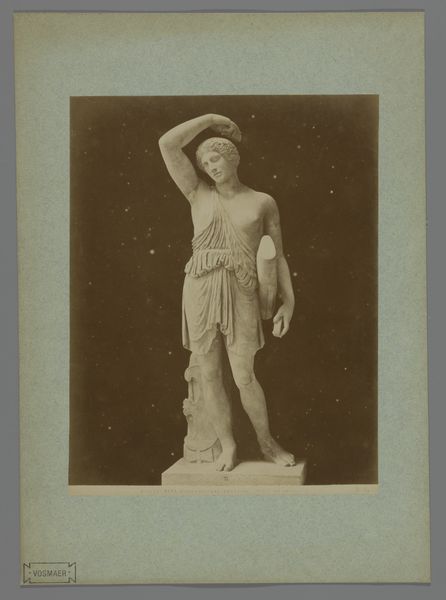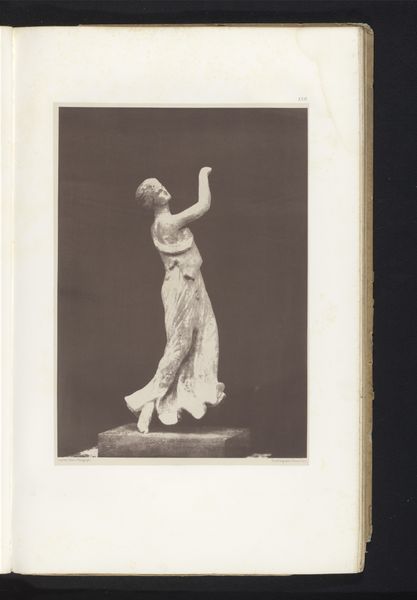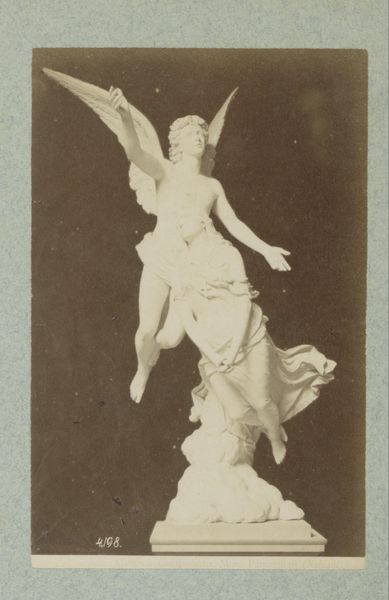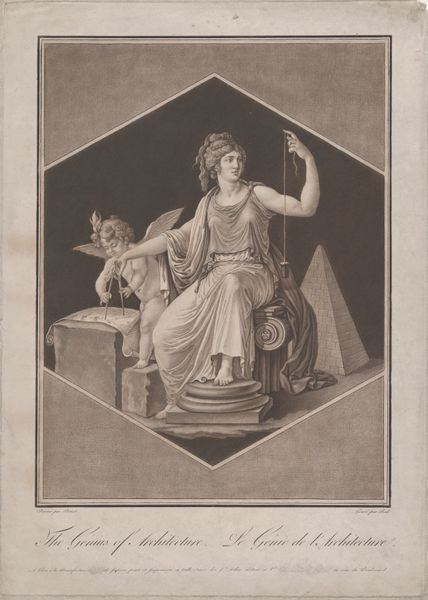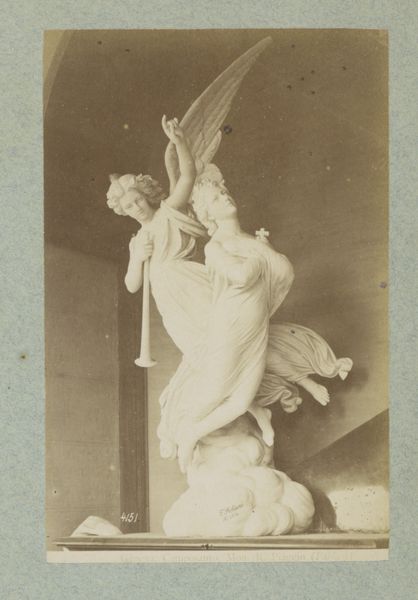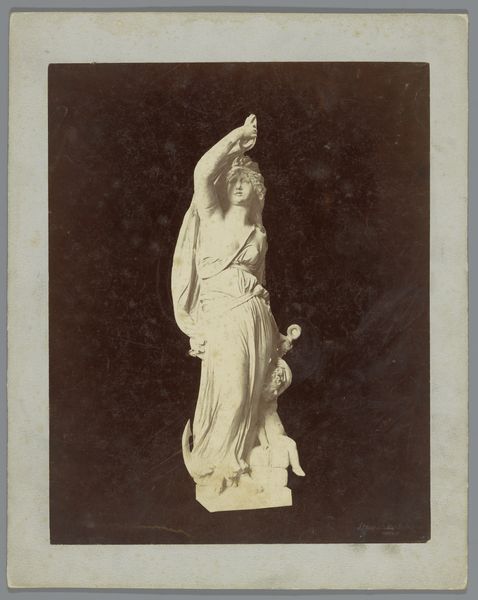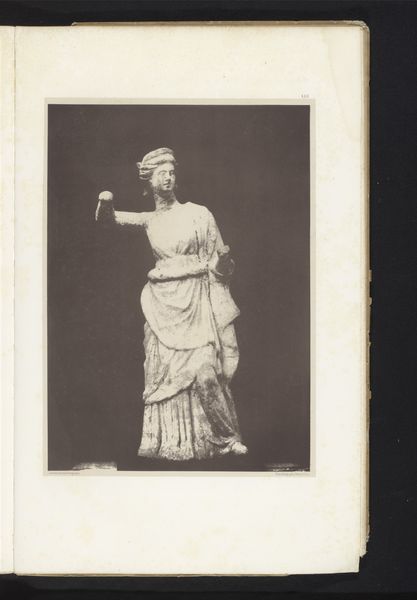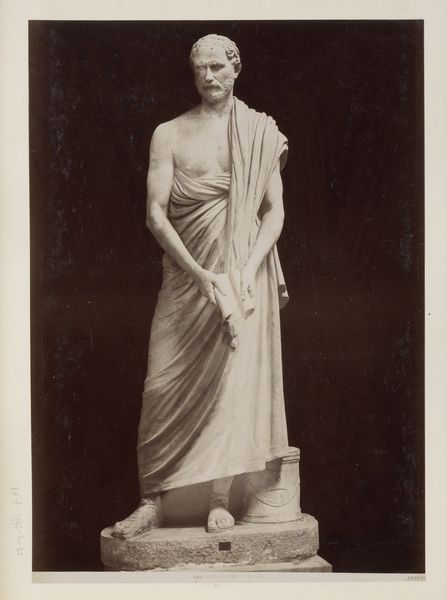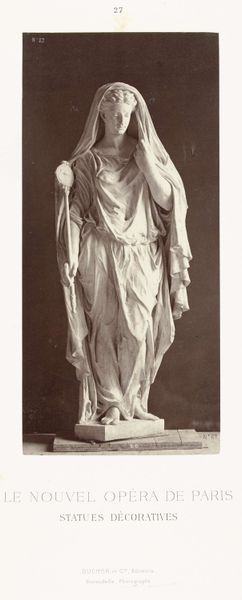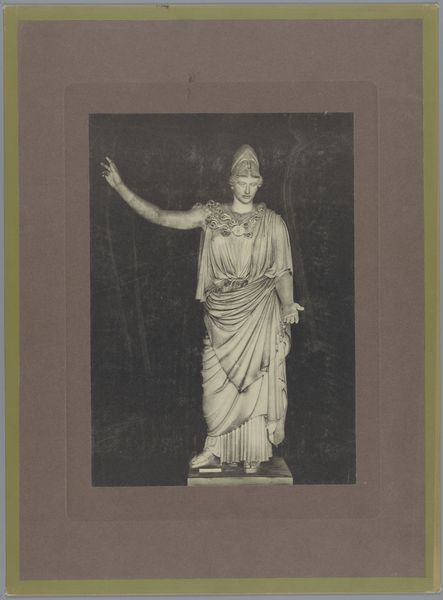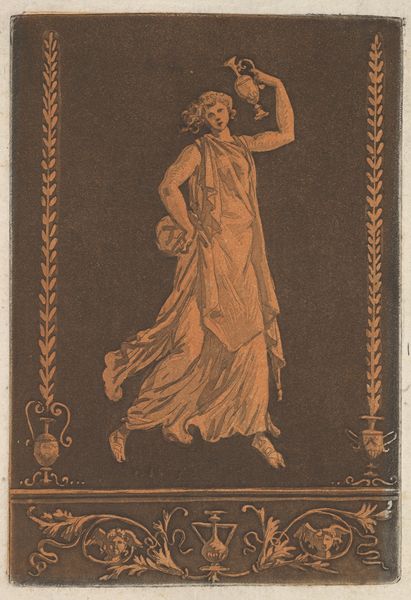
print, photography, sculpture, gelatin-silver-print, albumen-print
#
portrait
#
historical design
#
neoclassicism
# print
#
greek-and-roman-art
#
photography
#
historical fashion
#
sculpture
#
gelatin-silver-print
#
19th century
#
albumen-print
#
statue
Dimensions: height 86 mm, width 176 mm
Copyright: Rijks Museum: Open Domain
This is a photograph of a sculpture of Apollo Musagetes, made by Sophus Williams in the 19th century. The God stands draped in classical robes, holding a lyre. This is not just an instrument, but a symbol of harmony, order, and Apollonian ideals that stretch back to antiquity. Consider how the lyre appears again and again in Western art and thought. It goes back to ancient Greece, where it embodies intellectual and moral balance. Over time, the lyre morphs, surfaces in Renaissance paintings, and becomes a symbol of poetic inspiration. It is charged with the weight of classical tradition. The gesture of Apollo’s hand, open and extended, is more than a pose; it's an invitation, a beckoning towards enlightenment. It speaks to the power of art to elevate and transform, resonating deep within our collective memory. Each appearance of this symbol acts as a non-linear, cyclical reminder of its significance.
Comments
No comments
Be the first to comment and join the conversation on the ultimate creative platform.


